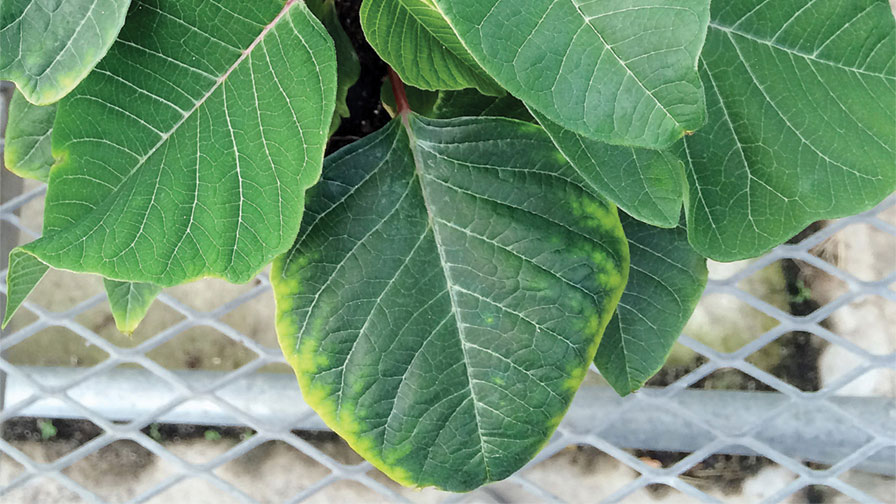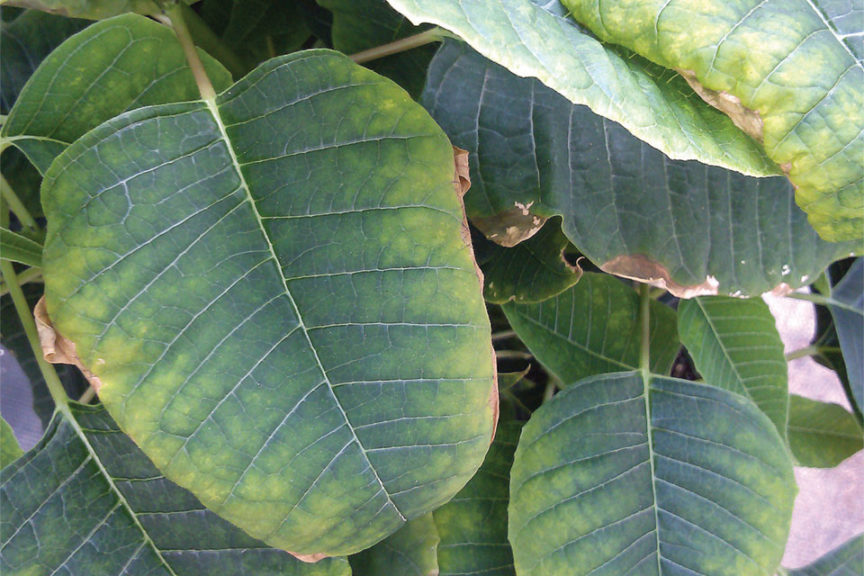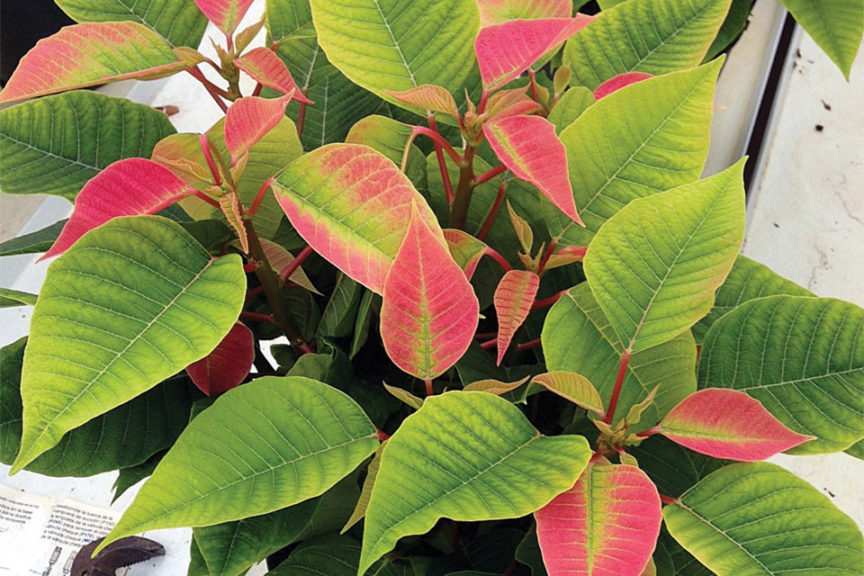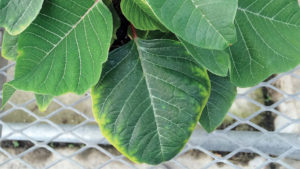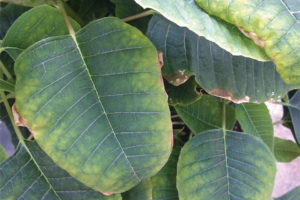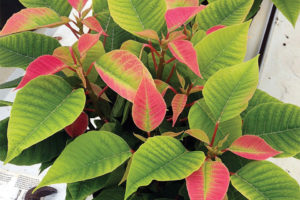How to Manage the 3 M’s of Poinsettias: Manganese, Molybdenum, and Magnesium
The pH of soilless media plays a large role in the availability of nutrients to plants. Most micronutrients tend to be more available to plants at low media pH. For crops inefficient at uptake of micronutrients, pH above 6.0 may result in micronutrient deficiencies. For crops efficient at micronutrient uptake, such as geraniums, pH below 5.8 can cause micronutrient toxicities.
Some crops and nutrients are more affected by media pH than others. Poinsettias and the nutrients iron (Fe), manganese (Mn), and molybdenum (Mo) are good examples. Fe and Mn are more available to plants as the pH drops below 6.2. Molybdenum and poinsettias present an opposite situation. Molybdenum is more available to poinsettias at a higher pH.
Nutrients can be classified according to their mobility within the plant. The differences in nutrient mobility lead to differences in symptom expression, which can be recognized and used for diagnosis of nutrient deficiency or toxicity. Nutrients are classified as mobile, immobile, or intermediate.
1. Mobile nutrients move easily within the plant. The lower leaves are able to give up these nutrients to supply the younger leaves. Therefore, deficiency symptoms first express on the lower leaves of the plant. Mobile nutrients include nitrogen (N), phosphorus (P), potassium (K), and magnesium (Mg).
2. Immobile nutrients don’t move easily through the plant. The lower leaves are unable to supply nutrients to the younger foliage. Deficiency symptoms first express on the youngest leaves. Immobile nutrients include boron (B), calcium (Ca), copper (Cu), iron (Fe), manganese (Mn), and zinc (Zn).
3. With intermediate mobility, early deficiency symptoms in poinsettias can occur anywhere on the plant. Somewhat mobile nutrients include molybdenum (Mo) and sulfur (S).
Manganese (Mn) Deficiency
Poinsettias with manganese deficiency exhibit symptoms including interveinal chlorosis starting with the youngest growth. The veins will appear sunken while the tissue between the veins looks raised. Frequent media analysis should be conducted to treat before symptoms appear. Maintain media pH below 6.2 to improve manganese availability.
Mn symptoms can be easily confused with iron deficiency. To distinguish from an iron deficiency, look for the characteristic change in leaf texture to a corrugated look, sometimes similar to an orange peel in appearance — that’s typical of manganese. High levels of iron in the media inhibit the uptake of manganese. If media tests confirm a deficiency, apply a corrective drench of manganese chelate at 1 to 1.5 ounces per 100 gallons. Retest the media before making additional applications.
Molybdenum (Mo) Deficiency
Poinsettias have a unique requirement for molybdenum and are produced at a higher media pH to accommodate this need. Molybdenum becomes more available as soil pH rises above 6.0. Growers incorporate poinsettia feeds with molybdenum as a part of the fertilizer regime, but they often have to supplement with additional ammonium molybdate. This is especially true when using standard peat-lite fertilizers. Some of the newer poinsettia cultivars have higher Mo requirements. If you’re not using a fertilizer specifically for poinsettias with elevated molybdenum, or soil tests indicate molybdenum is lacking, you can make pulse treatments or opt for a constant injection plan. Contact your supplier for details on both methods.
Molybdenum deficiencies are slow to express and should be treated preventatively in the months of September and October. Marginal leaf yellowing and cupping with leaf scorch distorted symptoms usually occur in the mid-region of the foliage right below the bracts. Molybdenum applications made after the symptoms appear won’t reverse these symptoms. Large, well-formed bracts will often hide those symptoms. Growers experiencing low soil pH may have to rely on a foliar spray instead of a soil drench, although correcting the soil pH is recommended.
Magnesium (Mg) Deficiency
Magnesium deficiency symptoms begin with an overall diminished green foliage color. Left untreated, symptoms progress to interveinal chlorosis first appearing on the lowest leaves. Downward cupping and a thicker texture may also occur with more severe deficiencies. Magnesium deficiency is often an indication that the overall fertility level of the crop is too low.
Apply magnesium as a one-time corrective drench application or as a part of a constant liquid feed program. Epsom salt is an inexpensive option to provide magnesium, and can be added to most fertilizers with the exception of those containing calcium (e.g., 15-0-15, 13-2-13). The one-time corrective rate for Epsom salt is 8 ounces per 100 gallons. Constant injection of Epsom salt can be done at lower rates, generally 2 to 3 ounces per 100 gallons based on the amount of magnesium in the irrigation water, including the fertilizer. Magnesium nitrate can be an alternative use for adding magnesium to fertilizers containing calcium.




